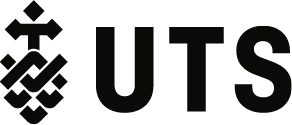As all of us in higher education continue to grapple with the profound changes brought about by the availability of GenAI, many in the learning and teaching community are discovering new, effective approaches for maintaining and even enhancing the learning experience for students. From the challenges of academic integrity to redesigning assessment around AI usage, learning and teaching practitioners had the opportunity to share ideas at the 2025 AI in Higher Education Symposium at Sydney University.
The Symposium, held on Friday 7 February 2025, brought together over 3,000 attendees, with a huge range of presentations to choose from. Different streams looked at AI in the various contexts ranging from AI literacy, core skills and critical thinking to assessment, professional practices and learning through problem solving. Most of the presentations can be viewed on the Teaching@Sydney website.
With such a vast array of voices, the symposium was able to cover a huge number of AI themes and concerns. Here are a few takeaways from a day of diverse and insightful discussions:
Assessment redesign can incorporate AI
This wouldn’t be all that surprising for those who are involved in learning and teaching at any level, but there are now many in the community who suggest that assessments of the future (or even of the now) can, and perhaps even should incorporate usage of AI. This approach could help students build AI literacy, while effective design could reduce the opportunities to use AI for cheating. Presenters at the symposium explored the possibilities of AI in assessment from a multitude of angles, including different forms of non-traditional assessment (e.g. podcasts), ensuring that students continue to develop their critical thinking skills alongside AI usage, and how to approach the daunting task of curriculum redesign for a whole degree.
AI can be a useful tool for encouraging student creativity
AI might encourage students to flex their creative muscles and take risks, especially those who could lack confidence without support. There were some fantastic examples of this, especially for assessments in which students are asked to produce specific content (e.g. informative posters). While students came up with the written content by themselves or in groups, they also used AI to prompt ideas and design appealing layouts without needing to spend extensive time on visual design. One academic emphasised the importance of allowing students to choose the content from the subject that they were most interested in as their focus for this kind of assessment, to help ensure that students are engaged in the work.
I was really impressed with the ‘Beyond the Algorithm’ presentation from Luis Lozano Paredes (University of Sydney), largely because the work on prompt engineering was looking for speculative responses. I like the idea of speculation and working with LLMs to co create new ideas rather than just mining for ideas that exist already. I think that is a pretty cool and innovative concept.
Dimity Wehr, Senior Curriculum Designer
Academic integrity remains a challenge
It’s clear that the issue of cheating and academic integrity with AI will remain with us for a while yet. Some academics at the symposium found significant numbers of students in their subjects were submitting AI-generated work with little to no personal contribution. This of course constitutes cheating, but it also demonstrates that these students are likely to be missing out on the learning aspect of the student journey. One interesting approach included ‘fighting fire with fire’ and using AI to review and redesign assessment. This might also help academics to build a better understanding of how AI should and shouldn’t be used in their disciplines.
AI can also be a useful tool for academics
Another presenter moved away from student usage of AI and examined how staff might be able to leverage AI platforms for their own practice. For tasks like putting together slides, refining lesson plans, and either expanding content or making it more concise, AI can be a time saver. It can also provide a shortcut to visual elements, negating the need to look for royalty-free assets, plus help academics to navigate the technical side of interactive classroom activities.
A very inspiring conference with so many ideas about how we might use GenAI in our teaching, and with our students and what we need to do to prepare ourselves, and our students for a world with GenAI. I learnt a lot in the sessions and so much in discussion with others wrestling with the same issues as me.
Ann Wilson, Senior Curriculum Designer
Continue the GenAI conversations at UTS with our online, weekly ‘GenAI and learning and teaching’ meet-ups – see our events page for more details.
